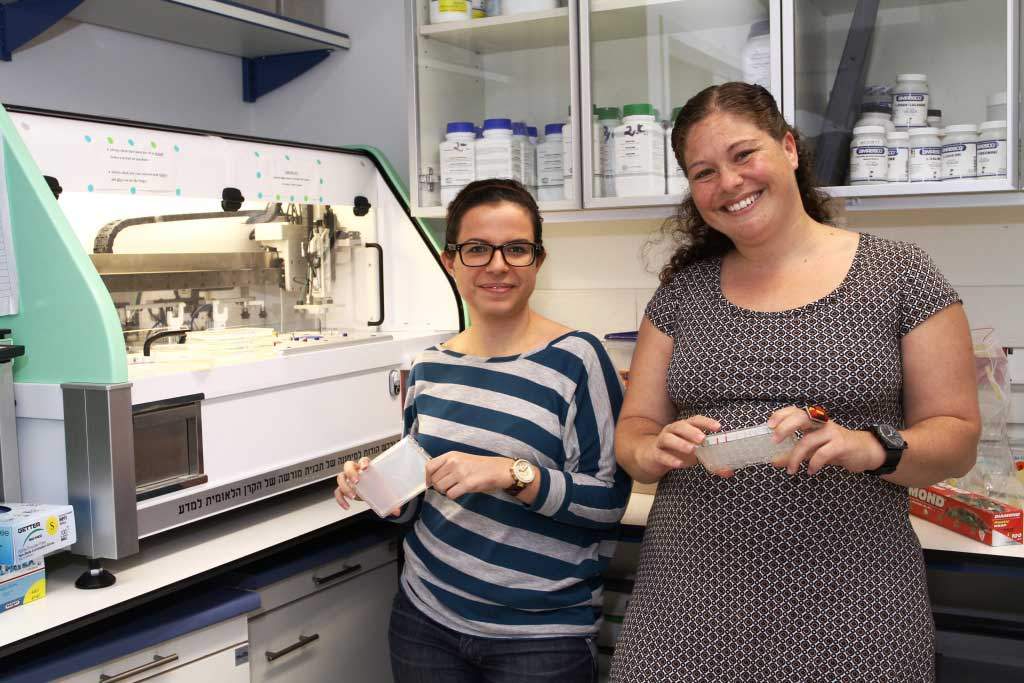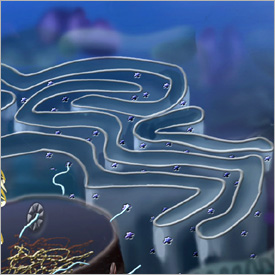“Biologists live in hope of discovering 'textbook examples’,” says
Dr. Maya Schuldiner of the Molecular Genetics Department. To demonstrate, she opens a biology textbook and points to a diagram of a molecular pathway – a series of molecular interactions for getting a cellular protein or process from point A to point B. Since many proteins tend to use the same general molecular pathways, a textbook example should ideally reveal important insights into the working of a cell, and it may often generate reams of further study and discovery.
But textbook examples, says Schuldiner, are hiding a much more complex reality: “Generally, the pathways that are discovered first are assumed to be the most important. When we start finding proteins using other pathways, we call these ‘exceptions to the rule.’ Often, no one stops to ask how many proteins actually use one pathway or another.”
Schuldiner and research student Tslil Ast decided the time had come to ask that question. It was time, in part, because new technology would enable them to check many proteins at once: The high-throughput microscopy equipment and computational techniques used in Schuldiner’s lab are able to reveal the pathways of hundreds of cellular proteins in a fraction of the time formerly required to study just one or two.
Schuldiner and Ast investigated the pathways taken by proteins to get into an organelle called the endoplasmic reticulum (ER), a maze-like series of folded membranes where the proteins undergo folding, quality control and routing to their next destination. The many and varied proteins passing through the ER are those that will eventually make their way out of the cell – hormones and external signaling molecules, as well as proteins that only make it as far as the outer face of the cell membrane. The well-studied pathway by which proteins enter the ER, discovered in the 1970s, is known as the SRP (signal recognition particle) pathway. The other pathways identified since are considered to be so insignificant that they are simply known as SRP-independent.
Is SRP truly the main pathway into the ER? The researchers surveyed all the ER-bound proteins in a baker’s yeast cell – some 1300 proteins. The answer was clear: Only about half of them strictly require the SRP pathway to get there. The rest can use other pathways; some of these pathways were partly known, but the findings hinted at undiscovered others, as well. The scientists found that, at least in yeast, there is a fairly clear-cut division: Proteins using the SRP pathway are those bound for the cell membrane. Because these pathways have been preserved throughout evolution, Schuldiner expects that a similar division exists in human cells. This means that the group of proteins using alternate pathways is likely to include many important hormones and signaling molecules.
The team is now working on developing a fuller picture of the parallel pathways. The ultimate goal is to identify all the molecular pathways for all of the cell’s exportable proteins. Rather than an ideal model, they expect to produce a complex picture that will better reflect actual protein behavior.
That may be bad news for the publishers of biology textbooks, but it’s good news for our understanding of living cells. “In the end,” says Schuldiner, “what we want to accomplish is a completely new image of how the cell works. We want researchers to stop looking ‘under the lamppost’ of the accepted models and broaden their scope to include all the possibilities.”

